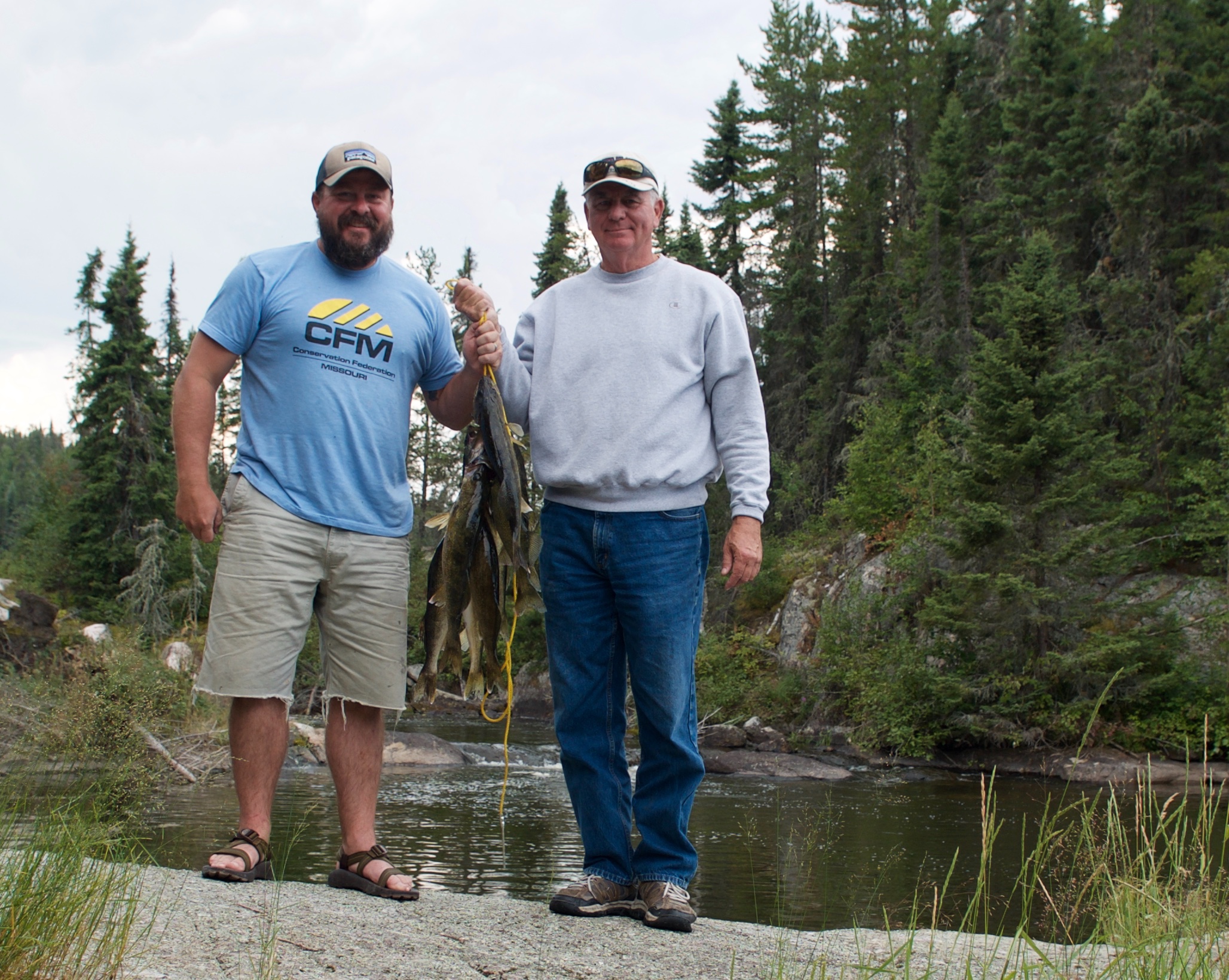Fly-In Wilderness Fishing Trip Surpasses Expectations


Seven days in a wilderness paradise catching more fish than most would believe possible surrounded by scenery no photographer could justify leaves one longing for extended simplicity. Back in the world, surrounded once again by constant distraction, I’ll draw often upon the week in which the biggest decisions were bacon or sausage for breakfast, and should we first fish for walleye or northern pike.
My dad, myself and six other men took float planes into Opasquia Provincial Park in extreme northern Ontario. We booked with Big Hook Wilderness Camps. It was the best fishing in the most pristine setting I’ve ever experienced. A dream trip. One I hope to make again.
Getting to our lake was no easy task. We drove to Red Lake, Ontario, which is about five hours north of International Falls, Minnesota where we crossed the border. You do need a passport to enter Canada these days, but our crossings were simple. We experienced friendly border guards coming and going with no searches of our vehicles. As we headed north in Canada, we did pass a checkpoint where vehicles were stopped and searched heading back south. Break no rules and you’ll have no problems. After staying the night in Red Lake, we took a small plane that carried all eight of us to Sandy Lake First Nation, an Oji-Cree Reservation. From there, we divided into three float planes to camp.
The lake was gorgeous. Engulfed in a pine and birch wilderness, we had thousands of acres of pristine water with rocky points, narrows, reefs, deep coves, massive weed beds, rapids and waterfalls to ourselves. Endless options for fishing. Wildlife was abundant. Bald Eagles, both mature and juvenile, were constantly in view. We watched from close range as a moose calf rode on its mother’s back as she swam across a cove.
Our abode was little more than a shack. A wilderness cabin constructed with bare minimums. A 1×4 ridge board was installed where at minimum a 2×6 should have been. Yet, the cabin has stood for more than 30 years, and held up during a storm I feared would rip off the roof. We had solar power backed up by a generator, a shower with hot water, and all the necessary cooking appliances. The outhouse served its purpose, but no one lingered to read a magazine. The cabin was fine, but might be rough for anyone not looking for adventure.
Camp included three 14-foot Lund v-bottoms boats outfitted with 15-horsepower 4-stroke Yamahas and one 20-footer with a 20-horse. My dad and I were given the larger boat to help appease his lack of fishing experience. These basic crafts served us well, proving once again one does not need to invest tens-of-thousands of dollars in a fancy boat to catch fish.
My tackle box was mostly a waste of space. When I return, I’ll take only the essentials, including ¼ ounce jig heads in chartreuse and hot pink, and a number of large bucktails, spoons and swimbaits. Nightcrawlers are all we used to tip the jigs. You can’t bring dirt into Canada, so nightcrawlers must be packed in something else. We used shredded, most newspaper. Line should be stout for northern. I fished 20-pound braid with a steel leader. For walleye, lighter monofilament is fine. Bring at least two more rods than you think you’ll need. Keep two rigged for walleye and two rigged for northern. Accidents happen. On this trip, I reared back to chuck a bucktail and its giant treble hook snagged my favorite walleye rod. Before I realized what was happening, I had heaved it high overhead into the water with no hope of retrieval. Then while trying to unstick a jig head in shallow water hung between two rocks, I snapped the tip off my remaining walleye rod. I finished the trip with six-inches trimmed from the top.
We ate like kings. One of the guys on this adventure was making his 25th or so trip. He knew what to bring. When we weren’t eating only fish, we had oven-roasted prime rib, New York strips, giant burgers, pork chops and fixings. Each dinner included a healthy portion of fresh, fried walleye. Every morning, a big breakfast was made and devoured before anyone went fishing. There was no need to go out too early. No rush. We drank coffee and took it easy. When you have thousands of acres of water to yourself, you don’t have to worry about someone setting up in your spot. And the fish bite all day long. Bring good food. It enhances the pleasure of the trip.
Many summers, I ventured north to Wisconsin and Minnesota with my grandfather. He was obsessed with walleye fishing. He devoured magazine articles and books on the species. He watched, recorded and re-watched television shows offering tips and tactics on how to catch more walleye. There’s no telling how much time and money he spent pursuing the species. But in just 30 minutes on the first day of this trip, my dad and I put together a stringer of fish so far superior to anything grandpa ever caught, I could not help but feel remorseful that the old man never had the opportunity to take a trip like the one we were on. In all my years of fishing, nothing has compared. I honestly don’t know if there is a water in the lower 48 states that can produce the quantity and quality of fish a remote, unpressured, perfect habitat lake like those you find when flown in.
If you’re a serious fisherman, or if you have a serious fisherman in your life, and you have the means to make a trip like this happen, you should do it. There’s a good chance, it’ll be a trip of lifetime. This trip ranks right up there with the greatest I have ever been on, and I’m not just talking about the fact that I was fortunate enough to spend time with my father and our friends. I’m talking about the fishing. I’ve never experienced fishing like this. It was beyond my imagination.
See you down the trail…
Brandon Butler


